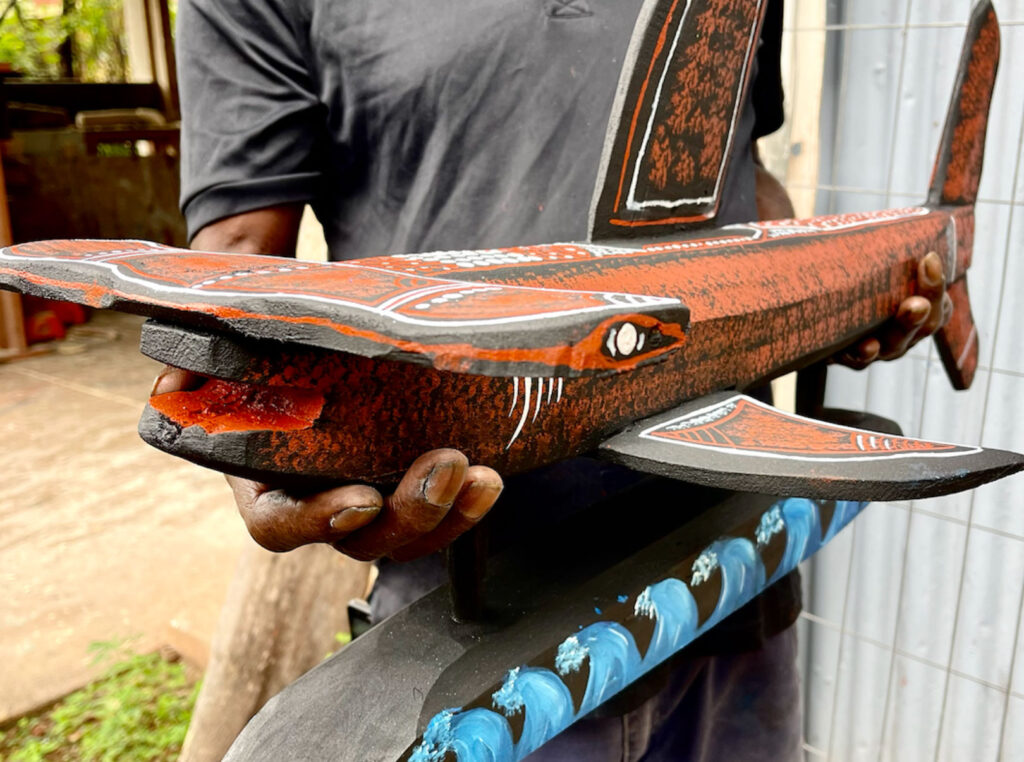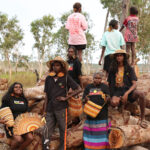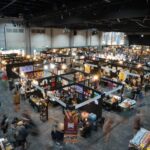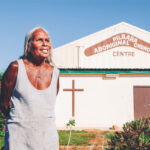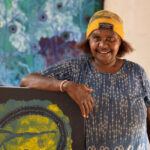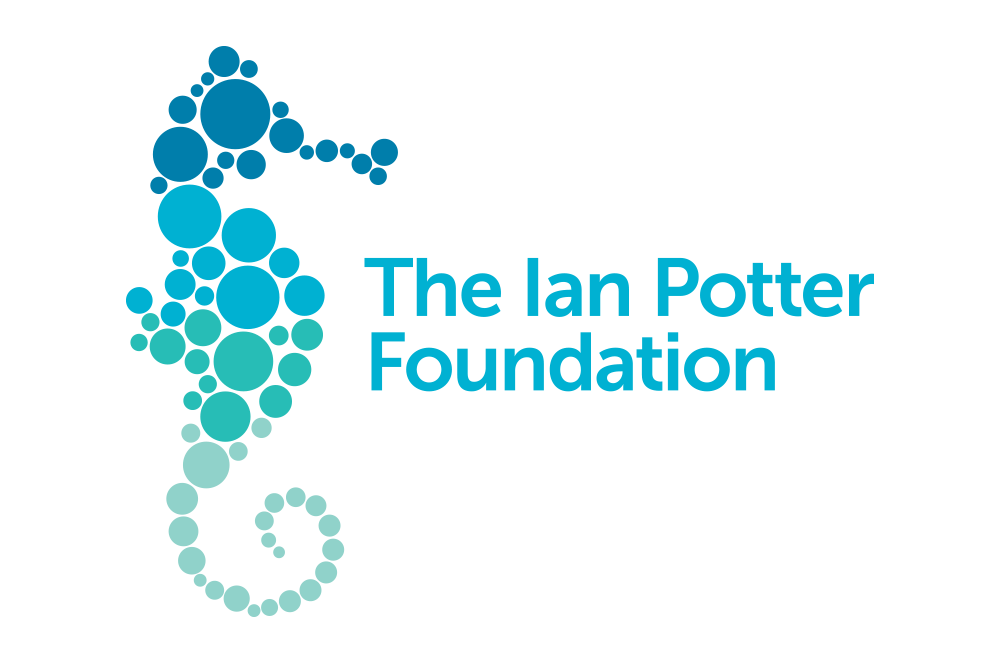Four Artists Honouring their Totems and Showcasing at DAAF 2024
Welcome to our Feature Artist series, where we delve into the captivating world of Aboriginal and Torres Strait Islander artistry. Here we explore the intricate interplay between Country, cultural figures & stories, totems and animals, as showcased by Art Centres who’ll be showcasing at the upcoming Darwin Aboriginal Art Fair (DAAF) 2024.
In this blog we highlight four remarkable artists who pay homage to their ancestral totems through their craft, each bringing their unique perspective to the forefront. Want more? You’ll be able to shop each of their works at the Fair!

John Martin Tipungwuti.
John Martin Tipungwuti
Art Centre: Tiwi Design Aboriginal Corporation, Tiwi Islands
John is a highly acclaimed Tiwi carver and artist, born in 1969. His work is created in the Tiwi Design studio at Nguiu on the southeastern corner of Bathurst Island, Northern Territory.
The Art Centre was established in 1960 to promote, preserve and enrich Tiwi culture. Over 100 artists are members of the Art Centre, creating paintings, wood sculptures, ceramics, fibre art and screen-printed fabrics.
Artwork details: “I make Jilarti (Jabiru) in colours black and white. I make small and I make big. This bird is an important totem for Tiwi people,” John says.

Image: ‘Jilarti’ (Jabiru), Erthophleum Chlorostachys (Ironwood) with natural ochre, 275cm x 40cm x 40cm.

Madeline Maloney.
Madeline Maloney
Art Centre: Durrmu Arts, Peppimenarti
Madeline is a Tyemirri woman from Peppimenarti and lives on Ngengi Wumerri Country. Impressively, she paints the moon dreaming ‘Deewin Kurim’, one of the main totems for her people, she depicts ‘Deewin’ by painting her own unique Durrmu designs and colours.
She works out of Durrmu Arts in the Northern Territory, renowned for fine contemporary art production in acrylic paintings and fibre works. The Art Centre is held together by the strong women and men of Peppimenarti, passing down their traditional knowledge and wisdom of fibre, textiles and mens body paint designs and cultural articles.
Artwork details: “Deewin’ is the Tyemirri word for the moon, the moon being one of the main totems for the Tyemirri people of Peppimenarti alongside ‘Emire’,” Madeline says.
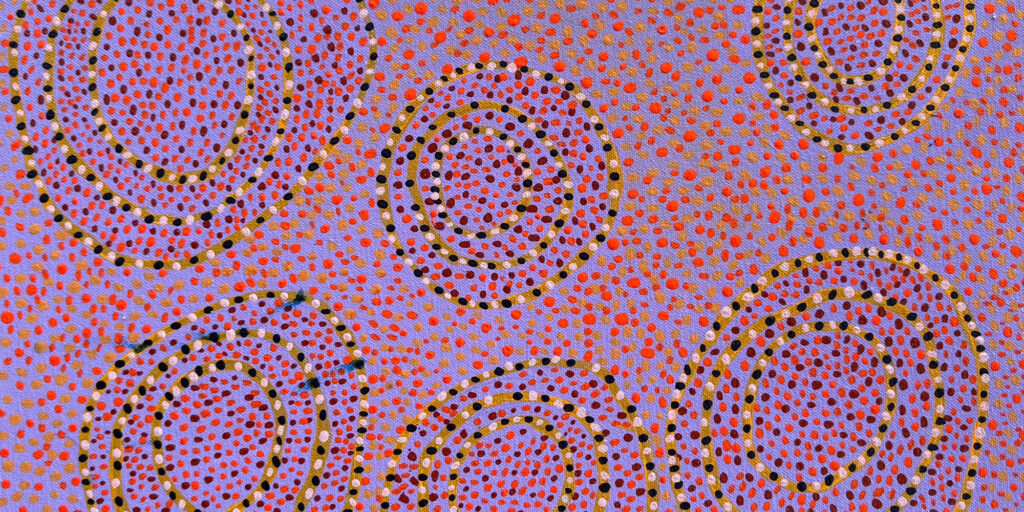
Deewin Kurim, acrylic on canvas, 30cm x 40cm, 2024.

Lucinda Puruntatameri.
Lucinda Puruntatameri
Art Centre: Munupi Art and Crafts Association, Melville Island
Watching her mum and Elders paint, Lucinda has honed her unique style through her daily art sessions. Her bold, intricate designs are not just about creativity — they are a nod to her roots. They speak volumes about her deep ties to her family’s wisdom and knowledge, keeping those traditions alive in her own way.
Lucinda is part of Munupi Arts and Craft Association, an Art Centre located along Melville Island’s coastline, Northern Territory. For 34 years Munupi Arts has been a vital meeting place for the Tiwi people of the Pirlangimpi community for employment, cultural pride and well being. Munupi Art is wholly Indigenous owned and governed.
Artwork details: During ceremonies on the Tiwi Islands a series of ‘yoi’ (dances) are performed; some are totemic (inherited from the person’s Mother) and some serve to act out the narrative of newly composed songs. Participants in these ceremonies are painted with turtiyanginari (the different natural ochre colours) in varying designs, transforming the dancers and, in some cases, providing protection against recognition by mapurtiti (spirits). These designs can be applied in different ways, one of which is using the finger, or in this case a brush. Painting of the face also occurs. These significant artistic designs collectively are called ‘Jilamara’.

Pupuni Jilamara, ochre and acrylic paint on canvas, 120cm x 80cm.

Steve Yunkaporta.
Steve Yunkaporta
Art Centre: Wik & Kugu Arts Centre, Aurukun
Steve, an artist and carver, hails from Cape Keerweer, a significant site for his mob, the Apalech saltwater People, known as Ngul Mungk (Moving Stone). He learned the art form from his uncle and created a notable piece—a large hammerhead shark, which he sent to Melbourne. Collaborating with his father, Garry Namponan, Steve crafted the sculpture, paying homage to his grandfather’s totem, known as Toyo.
He is one of a dozen artists at Wik & Kugu Arts Centre, situated in the remote Aurukun community on Queensland’s Cape York Peninsula. The Art Centre serves the area’s five Aboriginal Clans. It supports and celebrates cultural expression through dance and art, spanning the Wik & Kugu regions.
Artwork details: “Toyo is the name for the Hammer Head Shark from my Country at Cape Keerweer. This is a Big Totem for me and my family,” Steve says.

Toyo Hammer Head Shark, ochre with acrylic paint on milkwood, 95cm x 50cm x 35cm.

